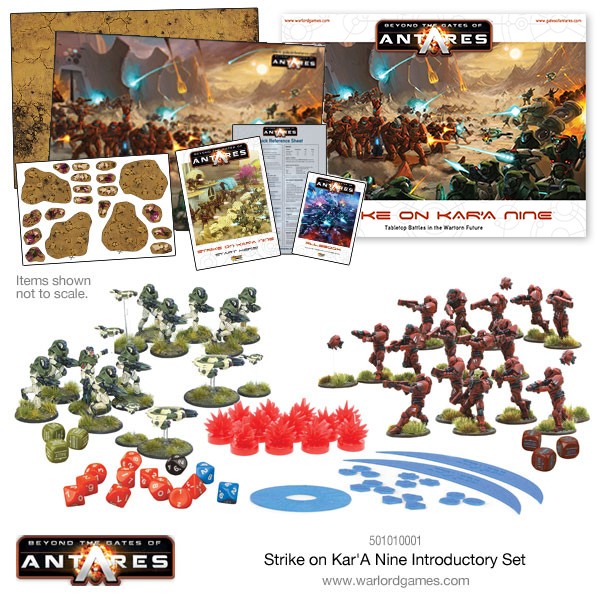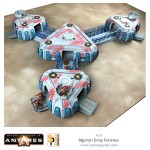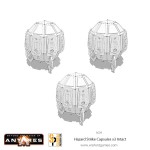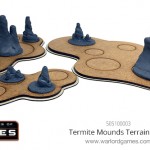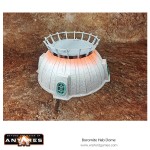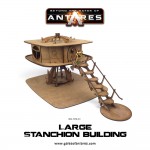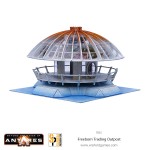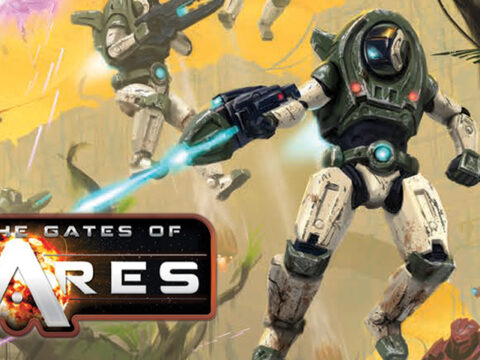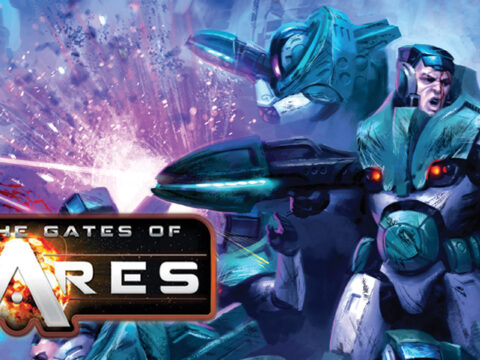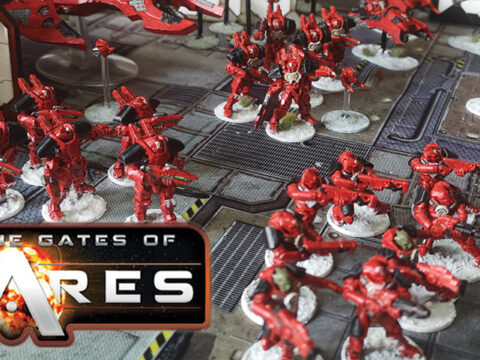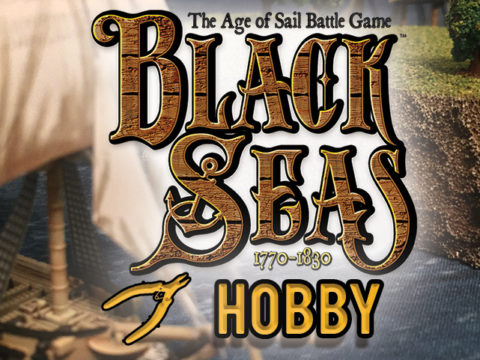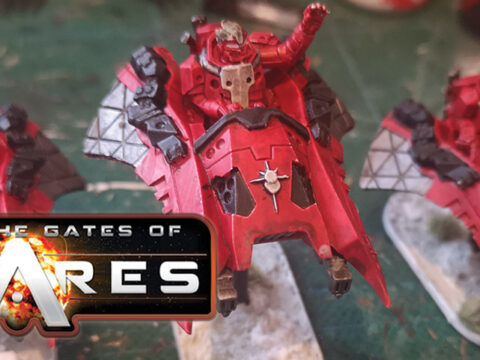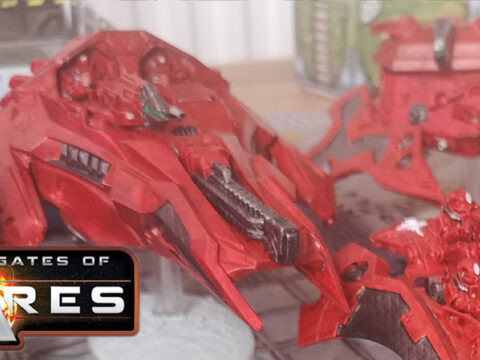Journey through the Gates of Antares (terrain time) – part 5!
By Jon Harrington
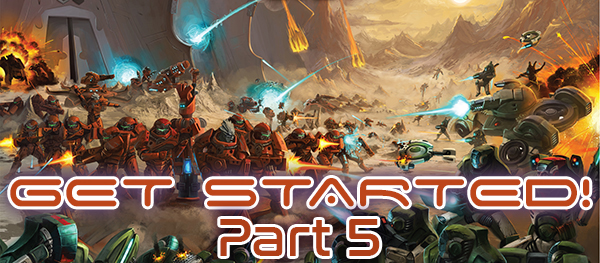
Read Part 1 here.
Read Part 2 here.
Read Part 3 here.
Read Part 4 here.
Terrain.
The Kar’A Nine boxed set comes with a set of cardboard templates you can use for terrain. These are fine for starting out but I prefer 3D terrain and it’s really easy to make. I highly recommend looking at “The Terrain Tutor” on YouTube. Mel’s videos regularly appear in the Warlord newsletter and with over 400 videos on his channel he covers everything from paints and tools to cliffs and large cities.
Termite Talk. I’ve used the techniques shown in the Terrain Tutor videos to put together some desert based termite mounds that can replace the cardboard templates.

It’s possible to use polystyrene foam to shape the mounds but I used air dry clay as I thought it would be easier to get the shape required. I started off rolling the clay into long sausages then coiled it up like a rope. With wet fingers, I gently shaped the clay to blend into a mound. You’ll find you can only go to 4-5cm in height before the clay bends but it’s easy to let it dry then use the small mound as a base for a larger one.

Leaving this to dry overnight I cut out a base of 5m foamboard and chamfered the edges. Using PVA glue I fixed the mounds to the base and then applied a layer of filler. This adds texture and fills in any gaps around the base and where the clay had cracked. The last step before painting was to cover the base in PVA then sprinkle grit and a few larger ‘rocks’ to break up the otherwise plain board. Any extras like tufts of grass are best added after painting.


The base coat can be any colour you chose but as I’m going for a similar terrain to the Algoryn bases I chose a mid-brown. It’s best to water down the first coat 50/50 with water and add a few drops of PVA to the mix as this will help to seal the grit to the base. Before it dried I added a couple of patches of darker brown to break up the pattern. When adding the basecoat, it’s best to go over the grit just once as the water in the paint can reactivate the PVA and you can end up brushing off all the previous layer.

When dry I added a dark brown wash to the termite mounds then heavily dry brushed on a mid-brown followed by a light dry brush of white to highlight key areas. When it’s dry you have a great piece of scatter terrain ready for your gaming table.
Buildings and walls. As well as natural terrain, you can also use buildings. I have an MDF ‘Ruined Workshop’ from Sarissa Precision that I’ve painted up in desert colours but I’ve also started on scratch built buildings. You are only limited by your imagination and I can promise you that you’ll start seeing uses for all sorts of household objects. The building to the right is half a polystyrene box with a doorway and window made from card. The aerial on the roof is part of a Kinder egg (any excuse to eat chocolate) attached to a 3-pronged thing that stopped the cardboard lid from sagging into a takeaway pizza.
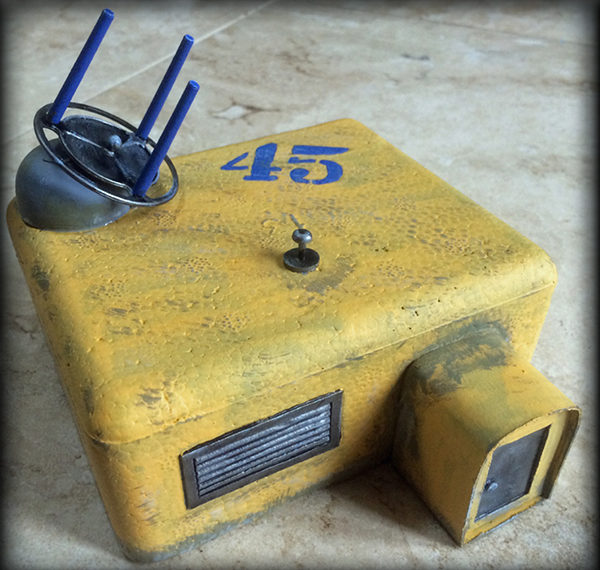
With my figures painted and terrain built I’m off to reread the manual and start playing Antares. Next time, the first game, Jon
Download this article as Jon’s original PDF here.
Share your work with the Community
Do you have something to share with the Beyond the Gates of Antares community, an article, scenario, paint scheme, build or something that other players would find interesting or fun? If so, we would love to hear from you as we’re looking to add great articles to the Beyond the Gates of Antares online resources.
For more details, download and read our guidelines and get in touch with our Antares focus, Tim Bancroft:
Start your battlefields with these terrain options!
